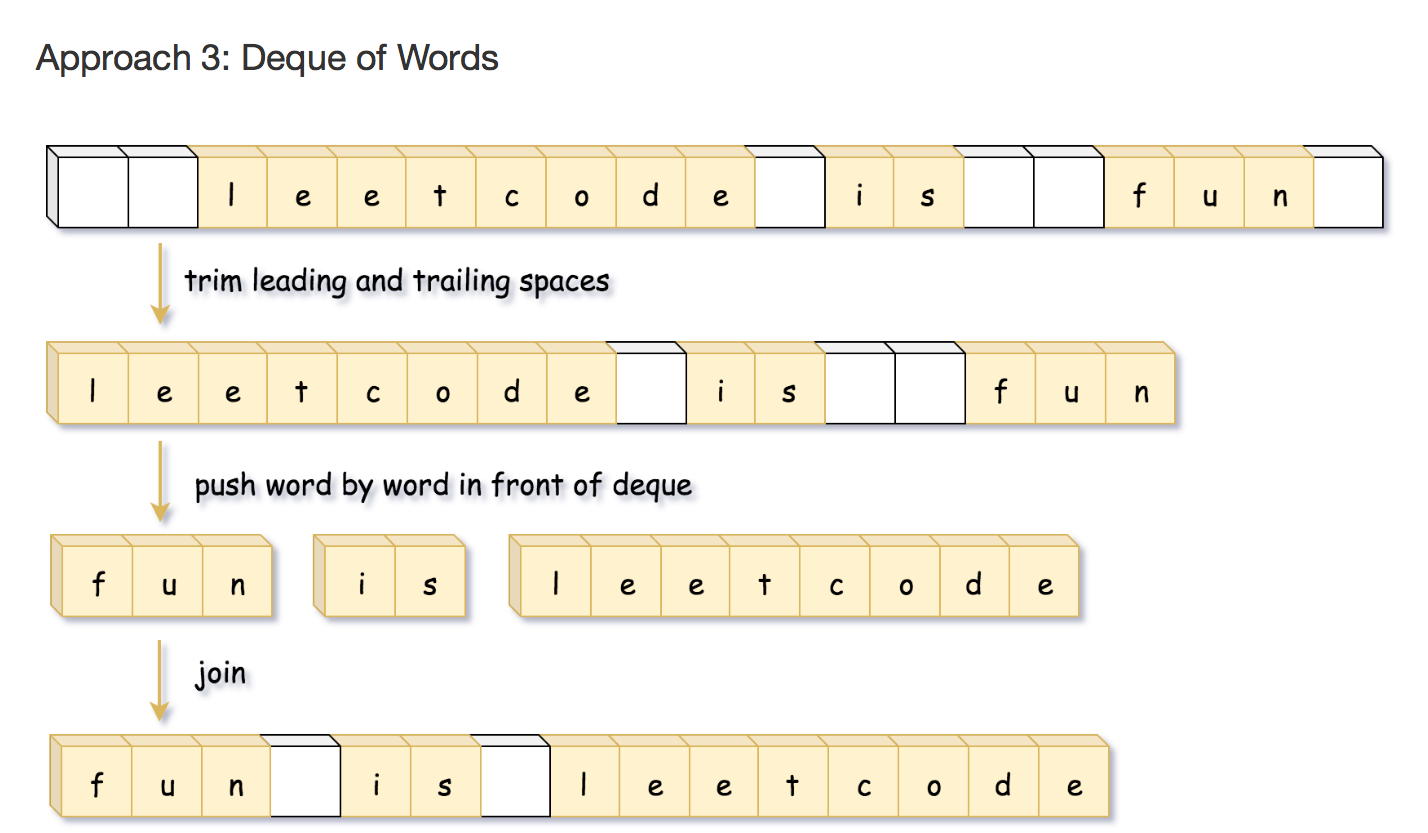Find ALL Anagrams in a String example: s: “cbaebabacd” p: “abc” output:[0,6] #It is apparently a index
#Sliding Window with HashMap
def findAnagrams(s: str,p: str):
ns,np = len(s), len(p)
if ns < np:
return []
p_count = Counter(p)
s_count = Counter()
output = []
for i in range(ns):
s_count[s[i]] +=1
if i >= np:
if s_count[s[i-np]] == 1:
del s_count[s[i-np]]
else:
s_count[s[i-np]] -=1
if s_count == p_count:
output.append(i- np + 1)
return output
One down, so many to go.
Count and Say
1. 1
2. 11
3. 21
4. 1211
5. 111221
The main problem is to calcuate the last sequence and count them. For example, we can count #4 as one 1, one 2 and two 1, which is #5,111221.
Two sum a = [2,7,9,11] target = 9, the moment we make hashtable, we also compare next one with our content, key is num and value is the index as the question ask it.
class Solution:
def twoSum(self, nums: List[int], target: int) -> List[int]:
h = {}
for i, num in enumerate(nums):
n = target - num
if n not in h:
h[num] = i
else:
return [h[n], i]
Valid Palindrome
Input: "A man, a plan, a canal: Panama"
Output: true
We can acutally slove the problem with two pointers instead of using the python function reversed. Also, the comman question of using two pointers is that when we move the pointer, dont forget to i is always smaller than j.
class Solution:
def isPalindrome(self, s: str) -> bool:
#this is not my solution, but i like two pointers
i = 0
j = len(s) - 1
s = s.lower()
while i < j:
while i < j and not s[i].isalnum():
i += 1
while i < j and not s[j].isalnum():
j -= 1
if s[i].isalnum() and s[j].isalnum() and s[i] != s[j]:
return False
i += 1
j -= 1
return True
Reverse words in a String
 This is the solution i chose, but from the original site, there is another solution possible. Link.
This is the solution i chose, but from the original site, there is another solution possible. Link.
Input: " hello world! "
Output: "world! hello"
Explanation: Your reversed string should not contain leading or trailing spaces.
and you need to reduce multiple spaces between two words to a single space in the reversed string.
First step would be removing the leading or trailing spaces.
from collections import deque
class Solution:
def reverseWords(self, s: str) -> str:
left, right = 0, len(s) - 1
while left <= right and s[left] == ' ':
left += 1
while left <= right and s[right] == ' ':
right -= 1
d, word = deque(),[ ]
while left <=right:
if s[left] == ' ' and word:
d.appendleft(''.join(word))
word = [ ]
elif s[left] != ' ':
word.append(s[left])
left += 1
d.appendleft(''.join(word))
return ' '.join(d)
Let me explain the logic behind my code,the first section is for trimming. Then,for loop the whole list. IF I see a space and word(we put the sub-sentence) is not empty. We gonna add that to our quene. IF there is no space, its a letter, add that to the word. KEEP MOVING THE POINTER
For this solution, I did not choose reverse cuz string in python is unmutable, We will need turn string into array. The function is shown below:
output = []
while left <= right:
if s[left] != ' ':
output.append(s[left])
elif output[-1] != '':
output.append(s[left])
left += 1
Reverse Words in a String ||
Input: ["t","h","e"," ","s","k","y"," ","i","s"," ","b","l","u","e"]
Output: ["b","l","u","e"," ","i","s"," ","s","k","y"," ","t","h","e"]
We would not need to worry about trimming and extra space.
Since the input is a mutable structure, so our solution would be reversing the whole string and then reverse each word. Okay, Lets do it in python.
There are two functions. reverse(l: list, left: int, right: int), reverse_each_word(l: list), which uses two pointers to mark the boundaries of each word and previous function to reverse it.
- Reverse the whole string: reverse(s,0,len(s)-1)
- Reverse each word: reverse_each_word(s)
class Solution: def reverse(self, l: list, left: int, right: int) -> None: while left < right: l[left],l[right] = l[right],l[left] left, right = left + 1, right - 1 def reverse_each_word(self, l: list) -> None: n = len(l) start = end = 0 while start < n: #traverse the list while end < n and l[end] != ' ': end += 1 #reverse the word, care about the index self.reverse(l, start, end - 1) #move to next word start = end + 1 end += 1 def reverseWords(self, s: List[str]) -> None: """ Do not return anything, modify s in-place instead. """ self.reverse(s, 0, len(s)) self.reverse_each_word(s)Spiral Matrix This is the question I saw before but never acutally did it. Coding for 4 hours now, my brain is drained.
Input: [ [1, 2, 3, 4], [5, 6, 7, 8], [9,10,11,12] ] Output: [1,2,3,4,8,12,11,10,9,5,6,7]We have few things to think about before digging into the problem, When we make turns, how row and column gonna change. When we hit boundary, we should just switch to next number, no need to go back. What else, keep in mind, Make every place false, make it true until we hit that place, thats why in our code, when we know next place is seen before, we just switch direction.
class Solution: def spiralOrder(self, matrix: List[List[int]]) -> List[int]: if not matrix: return [] R, C = len(matrix), len(matrix[0]) seen = [[False] * C for _ in matrix] ans = [] #use array to choose direction dr = [0, 1, 0, -1] dc = [1, 0, -1, 0] #lets start from 0,0 r = c = di = 0 for _ in range (R * C): ans.append(matrix[r][c]) seen[r][c] = True cr, cc = r + dr[di], c + dc[di] if 0 <= cr < R and 0 <= cc < C and not seen[cr][cc]: r, c = cr, cc else: di = (di + 1)%4 r, c = r + dr[di], c + dc[di] return ans